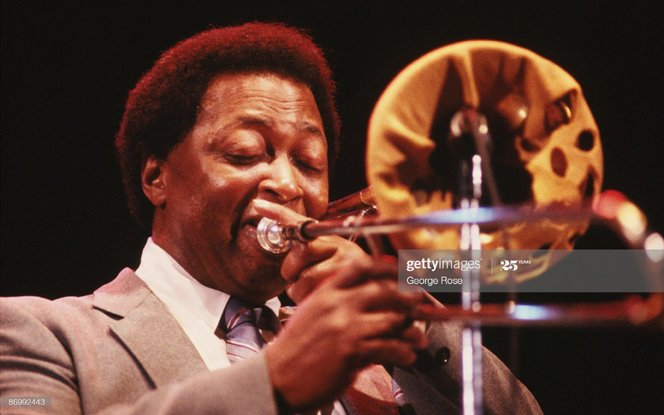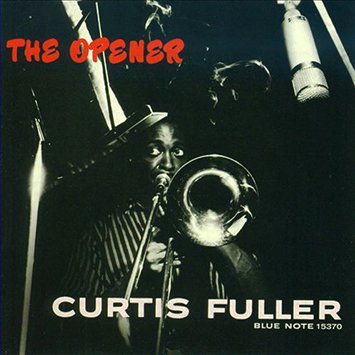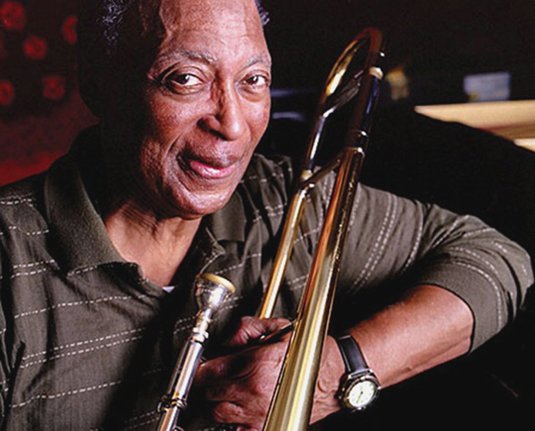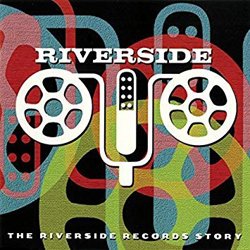The Jazz Messengers: Wayne Shorter (saxo tenor), Freddie Hubbard (trompeta), Curtis Fuller (trombón), Cedar Walton (piano), Reggie Workman (contrabajo) y Art Blakey (batería). Extraído del álbum Ugetsu (1963).
El norteamericano Curtis Fuller fue uno de los trombonistas más importantes de la historia del jazz junto a J.J. Johnson y Kai Winding, y tocaba en el estilo hard bop. Sus solos eran creativos y ambiciosos ampliando las limitadas posibilidades técnicas del instrumento. Después de cumplir el servicio militar en la guerra de Corea se incorporó al quinteto del multiinstrumentista Yusef Lateeff y apareció en cinco de sus álbums. En 1957 el grupo se trasladó a Nueva York y Fuller grabó New Trombone, su primer trabajo como líder, para el sello Prestige. En 1958 participó en el álbum esencial de John Coltrane Blue Train y durante los años sesenta en grabaciones de los saxofonistas tenores Wayne Shorter y Joe Henderson, el trompetista Lee Morgan, el pianista Bud Powell, y el organista y padre del soul jazz Jimmy Smith, entre otros.
American Curtis Fuller was one of the most important trombonists in the history of jazz along with J.J. Johnson and Kai Winding, playing in the hard bop style. His solos were creative and ambitious expanding the limited technical possibilities of the instrument. After military service in the Korean War he joined multi-instrumentalist Yusef Lateeff’s quintet and appeared on five of his albums. In 1957 the group moved to New York and Fuller recorded New Trombone, his first work as a leader, for the Prestige label. In 1958 he was featured on John Coltrane’s essential Blue Train and during the 1960s on recordings by tenor saxophonists Wayne Shorter and Joe Henderson, trumpeter Lee Morgan, pianist Bud Powell, and organist and soul jazz father Jimmy Smith, among others.

A partir de 1959 Fuller fue miembro del Jazztet del saxofonista tenor Benny Golson y el trompetista Art Farmer hasta que en 1961 se unió a los Jazz Messengers del batería Art Blakey, con quien grabó once álbums y estuvo hasta 1965. En 1968 hizo una gira con la big band del trompetista de bebop Dizzy Gillespie y de 1975 a 1977 también hizo varias con la de swing del pianista Count Basie. En 1973 formó un grupo eléctrico con el guitarrista Bill Washer y el teclista Stanley Cowell, y publicaron Crankin’. Durante 1979 y 1980 codirigió con Kai Winding el quinteto Giant Bones y de 1982 a 1986 volvió a colaborar con Golson y Farmer en su Jazztet reconstituido. Sus dos mejores álbums como líder son The Opener (1957) y Blues-Ette (1959). Murió en el 2021 a la edad de 88 años.
From 1959 Fuller was a member of the Jazztet of tenor saxophonist Benny Golson and trumpeter Art Farmer until 1961 when he joined drummer Art Blakey’s Jazz Messengers, with which he recorded eleven albums and stayed until 1965. In 1968 he toured once with bebop trumpeter Dizzy Gillespie’s big band and from 1975 to 1977 several times with Count Basie’s swing big band. In 1973 he put together an electric group with guitarist Bill Washer and keyboardist Stanley Cowell, and they released Crankin’. During 1979 and 1980 he co-led with Kai Winding the Giant Bones quintet and from 1982 to 1986 collaborated again with Golson and Farmer on their reassembled Jazztet. His two best albums as a leader are The Opener (1957) and Blues-Ette (1959). He died in 2021 at the age of 88.

Al principio el tema es suave y delicado, y parece que pertenezca al estilo cool jazz. El grupo solo despierta en el puente. De forma inusual, el primero en hacer su solo es Workman acompañado por el piano y la batería. Su línea melódica es sólida y está muy bien elaborada. Le sigue Shorter tocando frases con gusto y elegancia que deleitan el oído del oyente. A continuación entra Blakey haciendo un solo potente e impetuoso, interrumpido por Shorter y Hubbard que cada ocho compases tocan un riff. Luego el grupo toca un arreglo preestablecido para terminar.
At first the tune is soft and delicate, and it seems to belong to the cool jazz style. The group only wakes up on the bridge. Unusually, the first to solo is Workman supported by piano and drums. His melodic line is solid and very well crafted. He is followed by Shorter playing phrases with taste and elegance that delight the listener’s ear. Next Blakey comes in taking a powerful and impetuous solo, interrupted by Shorter and Hubbard playing a riff every eight bars. Then the band plays a pre-set arrangement to finish.

Translated with the help of DeepL
℗ Riverside Records


Si te ha gustado el tema, quizá querrás escuchar también los anteriores de este álbum:
If you liked the track, you might also want to listen to the previous ones on this album:
- «The High Priest»
- «On the Ginza»
- «I Didn’t Know What Time It Was»
- «Ping-Pong»
- «Time Off»
- «Ugetsu»
- «One By One»


even that Im pure electronic music guy, I can always find time to slow down and listen to some proper jazz. thanks for recommendation
I love seeing matured men like you playing trumpet it gives me joy
Your post has been supported and upvoted from the Classical Music community (Subscribe at peakd) as it appears to be of interest to our community. We also support jazz and folk music posts!
If you enjoy our support of the #classical-music community, please consider a small upvote to help grow the support account!
You can find details about us below.
The classical music community at #classical-music, Peakd and Discord. Follow our community accounts @classical-music and @classical-radio or follow our curation trail (classical-radio) at Hive Vote!